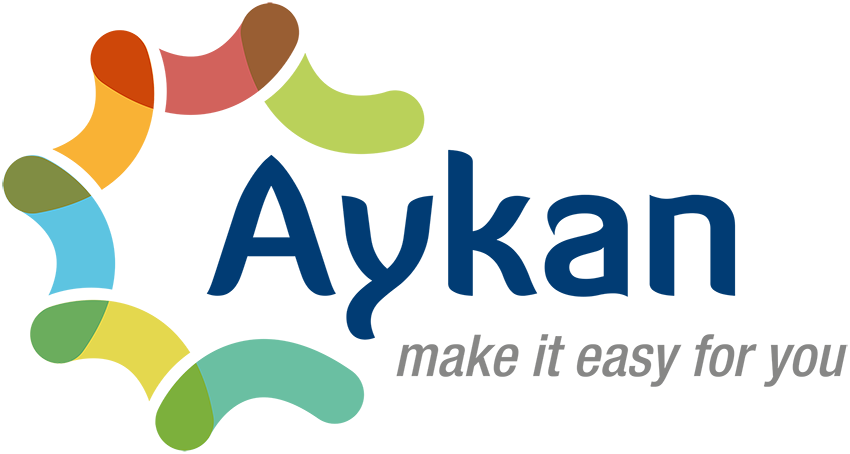Launching a Sharetribe-powered marketplace—whether it’s for services, rentals, products, or experiences—is an exciting venture. But no matter how sleek your design or competitive your pricing, success ultimately hinges on one crucial factor: trust. Buyers need to trust sellers. Sellers need to trust buyers. And both parties need to trust your platform.
This is where social proof becomes essential. It’s not just a marketing buzzword—it’s a powerful psychological principle that influences decisions every day. From online reviews to customer testimonials and user-generated content, social proof signals that others have had positive experiences, reducing perceived risk for new users.
In a peer-to-peer marketplace like the ones built with Sharetribe, trust is the currency that fuels every transaction. Without it, users hesitate. With it, your platform can flourish.
In this guide, we’ll take a deep dive into how you can strategically use social proof to build trust, boost engagement, and drive sustainable growth on your Sharetribe marketplace.
What is Social Proof?
Social proof refers to the psychological phenomenon where people look to the behavior and feedback of others to guide their own decisions—especially in unfamiliar situations. It’s the reason we check reviews before making a purchase or choose a busy restaurant over an empty one.
In the context of an online marketplace, social proof serves as validation that your platform is trustworthy, active, and worth engaging with. It helps convert hesitant visitors into confident buyers or sellers by showing that others are already having positive experiences.
Why It Matters for Marketplaces?
In a Sharetribe-powered marketplace, trust is not something that can be created through design or competitive pricing alone. While these elements are important, trust is the foundational pillar that holds your platform together and fuels its growth. Trust is cultivated through the visible presence of a thriving, engaged, and trustworthy community—and this is where social proof becomes a game changer.
Social proof acts as a powerful endorsement from users who have already interacted on your platform, helping to alleviate the uncertainty that often comes with new online environments. It signals to potential users that others have already had positive, successful experiences.
1. Buyers trust sellers: When prospective buyers see that others have left positive reviews, or when they witness real-life experiences shared by other customers (like in user-generated content), they feel more confident in proceeding with a purchase. They trust that sellers will deliver what is promised, and that their transaction will be secure.
2. Sellers trust buyers: On the flip side, sellers want reassurance that they’re engaging with legitimate and reliable buyers. When sellers see reviews or successful transaction histories from buyers, they’re more inclined to interact, knowing they won’t be scammed or faced with non-paying customers. Social proof gives them the confidence that your platform fosters respectful, committed buyers.
3. Both trust your platform: Ultimately, social proof builds a layer of trust in the platform itself. When users see active engagement, positive feedback, and transparent interactions between buyers and sellers, it reinforces the idea that your platform is safe, secure, and designed to facilitate smooth, reliable transactions. It shows that the platform not only connects buyers and sellers but also actively supports and ensures their success.
By showcasing social proof, you essentially create a virtuous cycle of trust—the more users trust your marketplace, the more they’re likely to engage, and the more active your platform becomes, further reinforcing trust for new users.
Recommended Video: Integrating Third-Party Tools with Sharetribe: What You Need to Know

Types of Social Proof.
Social proof can take many forms, each contributing to building trust in different ways. Here are the key types of social proof you can leverage to strengthen your Sharetribe marketplace:
1. User Reviews and Ratings
User reviews and ratings serve as one of the most powerful and trusted forms of social proof. They provide real-time feedback from customers who have already interacted with your platform. This feedback serves as a validation for new users considering the platform and helps them gauge what to expect from sellers or services. Positive reviews not only build credibility but also provide essential insights into the experience users have had—what they liked, what they didn’t, and how the platform or services met their needs.
Ratings, especially when quantitative, offer a quick benchmark for potential customers to assess the general satisfaction of others. For instance, an average rating of 4.5 stars out of 5 immediately signals that users are generally happy with the service. Meanwhile, detailed user reviews provide a deeper, qualitative understanding of what makes your platform stand out—whether it’s the responsiveness of customer service, the quality of products, or the reliability of freelancers. These reviews can also highlight areas for improvement, showing that the platform is constantly evolving and listening to feedback.
2. Testimonials
While user reviews are valuable, testimonials take social proof a step further by offering personal stories or quotes that emphasize how your marketplace, services, or products have made a positive impact. Testimonials are usually more in-depth and carefully selected for their emotional resonance, giving potential customers a deeper sense of connection with your platform.
A good testimonial goes beyond just stating that “the service was good”—it tells a story. For instance, a freelance worker might share how your marketplace enabled them to connect with high-quality clients, which led to consistent work and financial stability.Featuring testimonials from trusted individuals, especially industry leaders, influencers, or well-known figures in your niche, can significantly enhance credibility. When prospective users see that recognized authorities trust and endorse your platform, it elevates the perception of your marketplace and builds instant authority.
3. Trust Badges and Certifications
Trust badges or certifications are visual symbols that indicate your platform has met specific security, quality, or compliance standards. These can include badges like SSL security seals, GDPR compliance, or industry-specific certifications. When users see these badges, they’re more likely to feel that the platform is safe and secure, and that their data and transactions are well-protected.
4. Media Mentions and Awards
Media coverage can have an immense impact on building trust and enhancing social proof. If your marketplace has been mentioned or covered by reputable media outlets, it’s essential to showcase these mentions prominently on your website or social media channels. Positive press coverage connects your platform with authority and credibility, associating it with established and respected names in the industry.
Similarly, any awards or recognitions your marketplace has received—whether for innovation, best platform, or community impact—should be showcased. Awards validate that your marketplace excels in areas such as user experience, service quality, or market influence. For instance, an award for “Best Freelance Platform” can be a powerful way to show that your platform stands out in its niche. Awards act as third-party endorsements, signaling to potential users that your platform is not just another marketplace but a leader in the industry.
Incorporating these types of social proof into your Sharetribe marketplace helps create a sense of trustworthiness and authority. Users are more likely to engage with a platform that is recognized and praised by others.

5. Influencer or Expert Endorsements
When respected influencers or industry experts endorse your platform, it lends significant credibility and social validation. Influencer endorsements, whether through social media posts, blog mentions, or video reviews, can create a profound impact, particularly if the influencers or experts are well-known and trusted within your niche. These endorsements essentially act as a third-party affirmation of your platform’s value, offering a form of social proof that resonates deeply with your target audience.
Influencers, especially those with a large and engaged following, have the ability to influence purchasing decisions. Their opinions hold significant weight, and their audience often trusts their recommendations, whether it’s about new products, services, or platforms.
Expert endorsements are particularly effective in highly technical or specialized niches. For instance, if your marketplace focuses on freelance developers, an endorsement from a well-known tech industry figure can dramatically increase user confidence. By leveraging the trust these figures have cultivated over time, you can accelerate your platform’s credibility and reach.
6. User-Generated Content (UGC)
User-generated content (UGC) refers to any media—photos, videos, stories, and testimonials—that your users create and share. UGC serves as one of the most authentic forms of social proof because it is created by real users, showcasing their personal experiences with your platform. In marketplaces built with Sharetribe, where users upload products or services, seeing real-life representations of these items or experiences can strongly influence others.
UGC not only acts as a form of authentic social proof but also helps build a sense of community on your platform. When users share content on social media or through your marketplace, it creates a culture of engagement and involvement. Potential customers can see how others are benefiting from your platform, which builds a sense of trust. Encouraging users to share their experiences—whether through contests, hashtags, or community features—can significantly boost both engagement and credibility. It can also create a continuous loop where new content generates more interest and participation, making your platform feel vibrant and active.
Additionally, UGC often serves as a brand advocacy tool. When customers post about their positive experiences, they become ambassadors for your platform, organically attracting others who trust peer recommendations over marketing messages.
7. Number of Users or Successful Transactions
The number of active users, successful transactions, or listings on your marketplace can serve as powerful indicators of your platform’s reliability and popularity. When potential users see that your platform is actively engaging a significant number of people, they are more likely to trust that your marketplace is worthwhile and worth engaging with. Seeing metrics such as “Over 1,000 active users,” “50,000 successful transactions,” or “10,000 products listed” can encourage new users to believe in the vitality and success of the platform.
These numbers also indicate to users that the marketplace is thriving and dynamic. A platform with many active users and successful transactions shows it is not only trusted by others but is also likely to offer a better selection of services, products, and opportunities. For freelance platforms, showcasing how many successful projects have been completed and how much money has been paid out to freelancers further reinforces that the platform is reliable and beneficial for both buyers and sellers.
Why Social Proof is Crucial for Sharetribe Marketplaces?
1. Implement Verified Reviews and Ratings
Why It Matters:
Reviews and ratings have become a cornerstone of trust in online transactions. They serve as direct feedback from real customers, making them a vital form of social proof. According to BrightLocal, 98% of consumers read online reviews for local businesses, and 79% trust them just as much as personal recommendations. For buyers, seeing positive ratings and authentic reviews reassures them that your platform facilitates trustworthy, reliable transactions. For sellers, these reviews help build their reputation, leading to more sales and long-term success.
How to Implement It:
To harness the full power of reviews, make sure that every transaction automatically prompts both parties to leave feedback. By ensuring that feedback is given right after a transaction, you capture the most relevant and timely responses. Be sure to display average ratings prominently on user profiles and listings, as these give potential buyers an immediate sense of the seller’s credibility. To take it a step further, introduce visual markers like a “Top Rated Seller” or “Highly Recommended” label to recognize and highlight your most trusted users. This not only boosts trust but also gives high-quality sellers the recognition they deserve.

Best Practices:
Allow users to leave text reviews alongside the standard star ratings. Written feedback adds depth and detail to the ratings and provides more insight into what customers value. Make it clear which reviews come from verified transactions. This extra layer of trust helps maintain the integrity of your feedback system. Consider implementing AI moderation to automatically detect and remove fraudulent or misleading reviews, ensuring that your marketplace remains a trustworthy environment.
Advanced Tip:
Aggregate reviews from multiple listings and display them in a central location. For instance, showcasing something like “4.9/5 average across 500+ transactions” can effectively highlight the overall trustworthiness of your platform, even if individual listings don’t yet have many reviews.
2. Showcase User Testimonials
Why It Matters:
While reviews reflect individual transactions, testimonials provide an opportunity for users to speak about their broader experience with your platform. Testimonials humanize your marketplace, allowing potential customers to connect emotionally with real stories from satisfied users. They offer insight into what makes your platform stand out, from ease of use to exceptional customer service. These stories help prospective users overcome doubts and build a sense of community within your marketplace.
Implementation Tips:
Reach out to early adopters of your platform and ask them questions like: “What was your favorite part of using our platform?” or “What concerns did you have before joining, and how were they addressed?” This can give you valuable insights into how your platform helped them and what they appreciate the most. Showcase these testimonials across key areas of your site, including the homepage, checkout pages, onboarding flows, and about page.

Format Variations:
You can choose from different formats for maximum impact. Text testimonials are simple yet effective, especially when paired with a photo and the user’s name and role (e.g., “John, Art Seller”). Short video clips of users sharing their story can build an even deeper connection, showing real people sharing their real experiences. Consider using carousel-style testimonial sliders on landing pages to feature multiple testimonials at once, giving new users a broader range of experiences to consider.
Example:
“I sold my first handmade ceramic vase within a week of listing it. The platform was easy to use, and the buyer communication was seamless. I’ve now sold over 20 pieces!” – Rina, Ceramic Artist. Her story not only highlights success but also the personal connection she’s built with the platform, showing others that it’s a place where small businesses can thrive.
3. Use Trust Badges and Certifications
Why It Matters:
Visual cues like trust badges and certifications can immediately signal to users that your platform is credible, secure, and follows industry standards. These badges provide a quick and easy way for users to assess the integrity and professionalism of your marketplace. Badges act as reassuring visual symbols that communicate to users that your platform adheres to best practices, takes security seriously, and has met relevant compliance or industry standards.

Ideas for Trust Badges:
Badges such as “Verified Seller” or “Authentication Badge” are key to conveying legitimacy. For luxury resale marketplaces, like jewelry or fashion, authentication badges demonstrate that items are verified by experts. Offering a Satisfaction Guarantee badge or a Buyer Protection guarantee helps reassure customers that they can trust the platform in the event of a dispute. Displaying secure payment icons (like Stripe or PayPal) further reinforces the safety of transactions.
How to Apply:
To apply badges effectively, use custom user attributes to flag verified users and sellers. Create dynamic visual elements that change depending on a seller’s reputation or status—e.g., a gold star icon for highly-rated profiles. This adds an extra layer of visual appeal and recognition that will naturally draw attention to trusted users.
4. Leverage Influencer or Expert Endorsements
Why It Matters:
When respected influencers or industry experts endorse your platform, their credibility transfers to your marketplace. People trust what these figures recommend, and their endorsement can lend immediate validation to your brand. Whether it’s an influencer sharing their experience with your service or an industry expert speaking to its value, these endorsements help build trust in your platform by association.
Tactics:
You can launch with beta testers—influencers willing to explore your platform and share their experiences in exchange for early access. Collaborative content is another great way to increase credibility, where influencers write blog posts, produce videos, or share social media content featuring your marketplace. Consider building ambassador programs, where loyal users can become advocates for your platform in exchange for rewards.

Example:
If you run a wellness service marketplace, feature an endorsement from a certified yoga instructor:
“I’ve listed my virtual classes on [Your Platform] and love how easy it is to connect with clients who value mindful living.” This not only gives your platform credibility but also provides a sense of community within your niche.
5. Highlight Marketplace Activity and Metrics
Why It Matters:
When users see that others are transacting, booking, or listing, it demonstrates that your marketplace is active and thriving. High activity levels help build momentum, creating a sense of urgency and community engagement. It’s a simple way of showing that your marketplace is not just another empty space—it’s a dynamic environment with real, active users.
Metrics to Showcase:
Metrics like the total number of listings, successful transactions, and active user count provide clear evidence of your platform’s success. Highlight the repeat purchase rate to show that users come back for more, and emphasize average seller response times to underscore the efficiency and professionalism of your marketplace.

Display Ideas:
Using live counters like “Over 12,000 successful rentals this year” adds a sense of ongoing success. Include a stats block on the homepage that reads something like “Trusted by 5,000+ happy customers”. Seller dashboards that display key metrics like average rating, number of sales, and response time can help individual sellers build their credibility.
Pro Tip:
Even if your platform is new, small wins can build trust: “100% of first-time customers said they would use our service again.” This reinforces the message that even new users are having positive experiences.
6. Encourage User-Generated Content (UGC)
Why It Matters:
User-generated content (UGC) builds a sense of community around your marketplace. It offers real-life, unpolished perspectives that provide an authentic view of your platform. UGC is far more relatable than curated marketing content because it comes directly from the users themselves. This content also helps foster engagement by encouraging users to become a part of the storytelling process.
UGC Examples:
Encourage users to share photos of their products or services, screenshots of positive feedback, or even videos showing how they use your platform. This content adds social proof and builds trust as other users see real-world applications of your service.

How to Encourage It:
Run contests or campaigns like: “Post your listing experience and tag us to win!” Offer small perks or discounts for shared content. Create a branded hashtag to increase visibility and make it easier to track and reshare content. For example, “Tag #RefoundStyle to be featured on our homepage!” This keeps your platform active and engaged.
7. Use FOMO and Real-Time Social Proof Notifications
Why It Matters:
FOMO (Fear of Missing Out) is an incredibly powerful motivator. Showing users that others are actively engaging with your marketplace creates a sense of urgency and excitement. When they see that others are engaging with listings, booking services, or purchasing products in real-time, it encourages them to take action before they miss out on something valuable.
What You Can Show:
Use notifications like “Someone just booked this listing!” or “Only 1 item left” to create urgency. Highlight popular or trending services with messages like “Trending: This service has 10 bookings this week!” to boost visibility and encourage immediate action.

Tools & Integration:
Consider using tools like ProveSource, Fomo.com, or NotificationX to integrate real-time social proof notifications into your site. Even if you don’t use real-time tools, simulating urgency by adding messages based on booking volume or availability can still have a significant impact on conversions.
Final Thoughts: Trust is Built in Layers
No single form of social proof works in isolation. The most successful marketplaces use a multi-layered approach: reviews, testimonials, badges, activity stats, influencer endorsements, and user content. When combined, these elements paint a picture of reliability, consistency, and care.
And remember, trust is a continuous process. Keep collecting feedback, highlighting wins, and evolving your user experience.
FAQ's
1. How can I effectively gather user reviews and ratings on my Sharetribe marketplace? User reviews and ratings are crucial for building trust, and the best way to gather them is to prompt users to leave feedback after each transaction. Automate this process to ensure that reviews are timely and relevant. Make it easy for both buyers and sellers to leave reviews, and display the ratings prominently on profiles and listings to increase visibility. You can also consider offering incentives or recognition to users who consistently leave positive feedback.
2. What types of testimonials should I feature on my platform? Testimonials should focus on real, detailed experiences that showcase what users love about your marketplace. Highlight stories from a diverse range of users, such as buyers, sellers, and industry experts, to resonate with different segments of your audience. Use video testimonials for more emotional impact, and consider including a photo and the user’s full name for authenticity.
3. How do trust badges and certifications work to build trust on my platform? Trust badges and certifications visually communicate that your platform adheres to industry standards, offering security and reliability to users. For example, badges that indicate verified sellers, secure payments, or compliance with GDPR show that your platform is trustworthy. Display these badges on user profiles, product listings, and during checkout to reassure customers that their data and transactions are safe.
4. Can influencer endorsements really make a difference in my marketplace? Yes, influencer endorsements can significantly boost credibility by associating your platform with respected individuals. When influencers or experts in your industry endorse your marketplace, they lend their authority to your brand, making it more appealing to potential users. This can be particularly effective if the influencers are well-known within your niche and have an engaged, trusting audience.
5. How can I highlight marketplace activity to show that my platform is thriving? Showcasing metrics such as the number of successful transactions, active users, or repeat customers is a great way to demonstrate that your marketplace is active and reliable. Display these numbers on your homepage, in user dashboards, and even in real-time updates to create a sense of momentum. For example, you could show “Over 10,000 successful transactions this year” to emphasize growth and success.
6. What role does user-generated content (UGC) play in building trust on my platform? User-generated content (UGC) plays a vital role in creating authenticity and building a sense of community. UGC such as photos, videos, or stories shared by users helps new customers see real-life examples of how the platform is used. Encourage users to share content by running campaigns or creating a branded hashtag to increase visibility. The more content users contribute, the more organic and relatable the marketplace appears.
7. How can I create urgency using real-time social proof notifications? Real-time social proof notifications, like “Someone just purchased this item” or “Only 1 spot left!” are powerful tools for creating urgency and FOMO (Fear of Missing Out). Integrating these notifications on your site encourages potential users to act quickly before they miss out. Use tools like ProveSource or Fomo.com to add notifications that highlight the popularity of your listings or services in real-time, making the platform feel more dynamic and encouraging immediate action.








